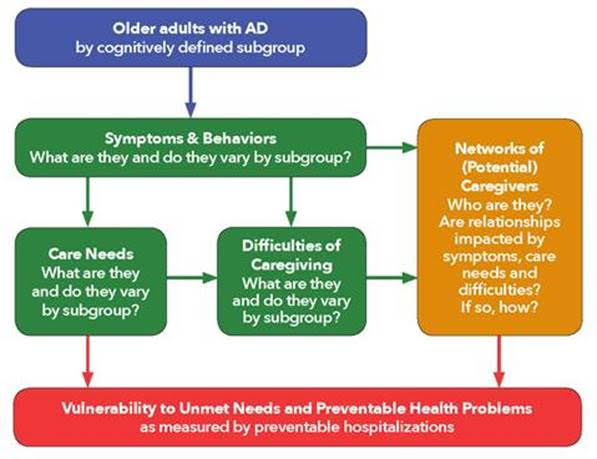Project 2: Cognitively Defined Subgroups of Alzheimer’s Disease
Project 2 asks pioneering questions about whether Alzheimer’s disease is a single disease or if there are many different subtypes. This study will use innovative information from images of the brain as well as examination of brain cells to understand whether there are structural differences in the brain that are associated with different ways people exhibit Alzheimer’s and other types of dementia.
Because treating Alzheimer’s disease as a single condition has not resulted in any disease-modifying therapeutic strategies, a subgroup approach — similar to the approach used for cancers and other medical conditions — has been recommended. This Alzheimer’s subgroups study will enable integration of additional genetic data from the Adult Changes in Thought (ACT) Study to more fully delineate the genetic architecture underlying subgroups. Identification of biologically distinct Alzheimer’s disease subgroups may enable strategies that allow for Alzheimer’s to be successfully treated with personalized medicine approaches.
One of the novel aims of this project is to anticipate caregiving needs for people with dementia and Alzheimer’s disease, which is increasingly important as the population ages. Looking at different types of dementia may help identify ways to support people with dementia and their caregivers. At the societal level, there are many challenges with the current systems of care. Formal support systems may be difficult to access or expensive. The help provided by family and other informal caregivers is critical to the health and well-being of people living with dementia. Research that can provide guidance about the likely caregiving challenges of different types of Alzheimer’s disease, as well as potentially successful strategies, can help better equip people living with dementia and their families or other caregivers, and the providers and health system seeking to support them.



